In this last part of my mini-series looking at wide angle Nikkor LTM lenses, I’m going to cover the W-Nikkor.C 2.5cm f/4. At first glance it is a similar story to the 3.5cm f/2.5 and 2.8cm f/3.5. However, I’d consider it the twins’ younger sibling, the capricious baby if you will. Due to its size and construction certain decisions needed to be made that make this lens the quirkiest of the bunch.
Background
The W-Nikkor.C 2.5cm f/4 LTM was released in 1954 for LTM and the S-mount. It’s a Topogon, the widest lens design at the time of its inception in mid-30s. Due to its low distortion it was often used for aerial photography and cartography. Part of the design are two near-hemispherical elements. In order to maintain its tiny size (the size of the elements had to be reduced by about 90%), they needed to be a mere 0.43mm thick. This is important if you ever find a beat-up copy that needs some CLA.
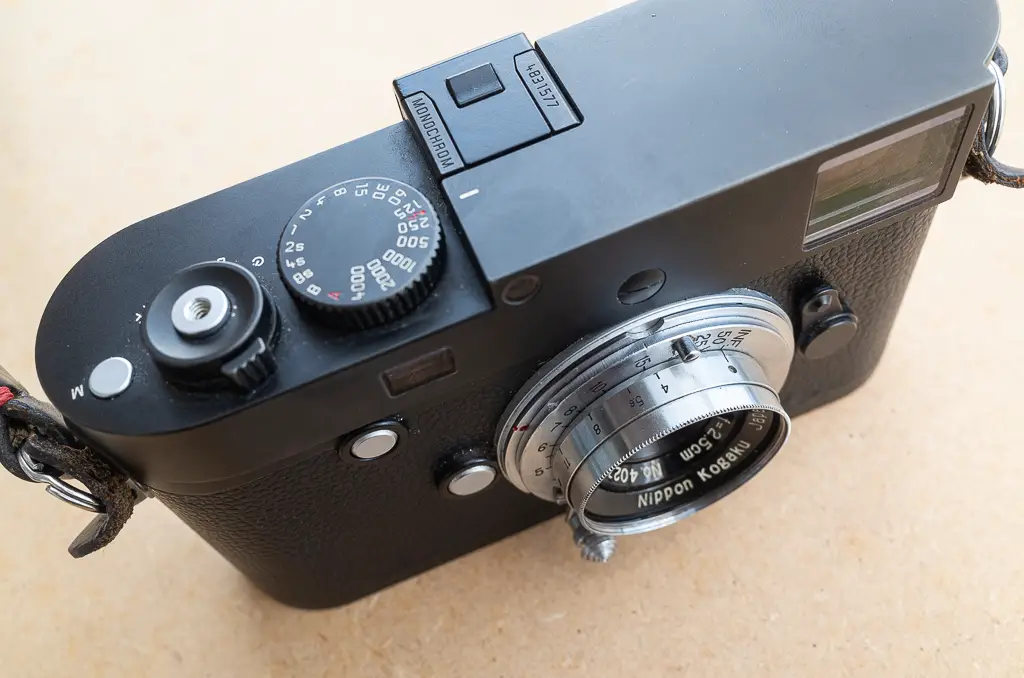
Nikon’s manufacturing department didn’t immediately know how to remove any dust when assembling the lens. Air blowing guns weren’t an option because they could cause the lens to crack or blow away (the lenses were so flimsy there was no means of holding them firmly in place, clamps would apply too much pressure). Using alcohol could also cause them to break due to the heat difference caused by evaporation. Eventually, a device was created especially for the sake of assembling this lens that used feathers to remove the dust. All this sounds like it’s going to be a problem for your average lens repair technician.
Build and handling
The W-Nikkor.C 2.5cm f/4 is remarkably short at just 10mm, but unlike the other two lenses I covered it protrudes into the camera body by about 5mm past the mount. It can definitely be described as a pancake. The mouth of the lens is 35mm in diameter, it features a 34.5mm filter thread. The 8-blade aperture stops down to f/22 at one-stop clicks. The blades have a very odd shape – straight at first, then transition into an almost semi-circular curve (otherwise it would probably be very tricky to allow it to stop down to f/22 at this tiny size). You need to rotate the mouth in order to set the aperture. The aperture value indicator is on the face of the lens (around the front element) instead of on the ring. The lens focuses down to 3.5ft / 1 metre. The focus throw is about 180 degrees and the lens comes equipped with an infinity lock.
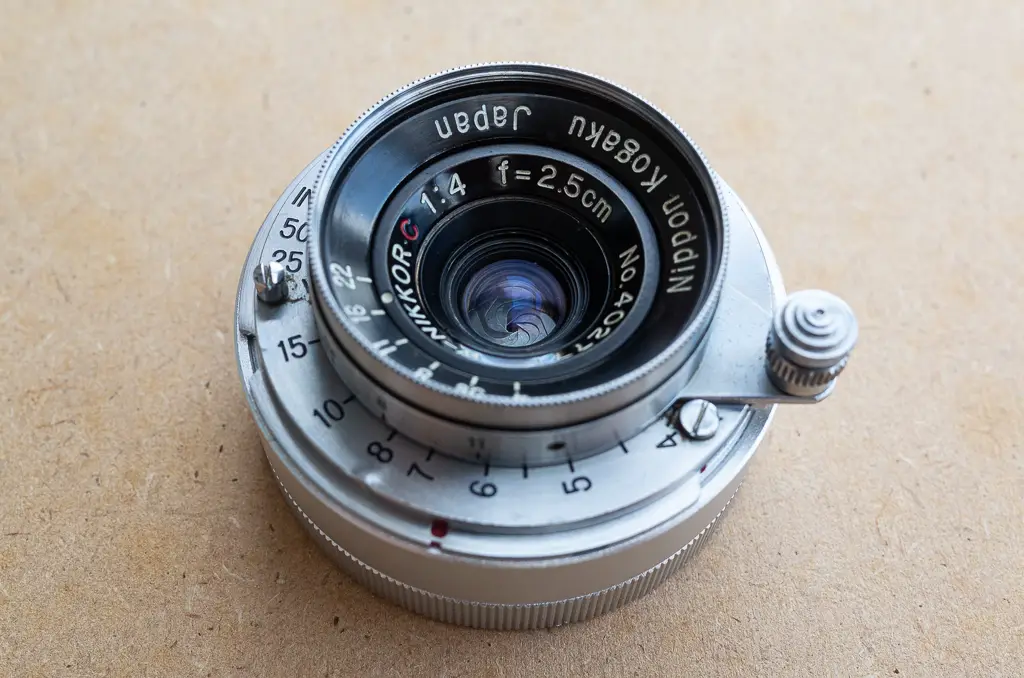
The downside of using a 25mm lens over 28mm, although not a major one, is there are no dedicated framelines in your Leica M rangefinder. Personally, I don’t bother with an external viewfinder like I would when using a 21mm lens. The difference between 28mm and 25mm is too small to justify the extra hassle. I simply frame tighter than usual and it works well enough. If you do want to use it with an external viewfinder, Voigtlander 21/25 finder (the plastic version) is a nice cheap option.
Comparing the W-Nikkor.C 2.5cm f/4 to MS-Optics pancakes, despite not being as tiny (but not by much) I think it comes up on top. It is heavier and more solid, focusing is basically the same as in any other LTM lens with an infinity lock, much more comfortable than a tiny easy to lose lever. The aperture is easier to adjust as well. Having a relatively large filter thread also helps, even if it is uncommon. No weird screw-in lens caps, instead either a relatively easy to find Nikon snap-on cap or a Leitz A36 slip-on one. It has a lovely solid-brass feel. I would have no concerns when slipping it in my pocket.
LTM or S-mount?
In this case, the answer is clear – if you’re going to use it on any camera body (not just the Leica M) other than a Nikon rangefinder, you will need to hunt down the LTM version. It’s not even an issue with the protruding back element, it is the simple fact that the S-mount version doesn’t have a focusing ring and can only be focused using the wheel on the camera body. As far as I know there are no adapters for any camera mount that offer a means of focusing this lens.
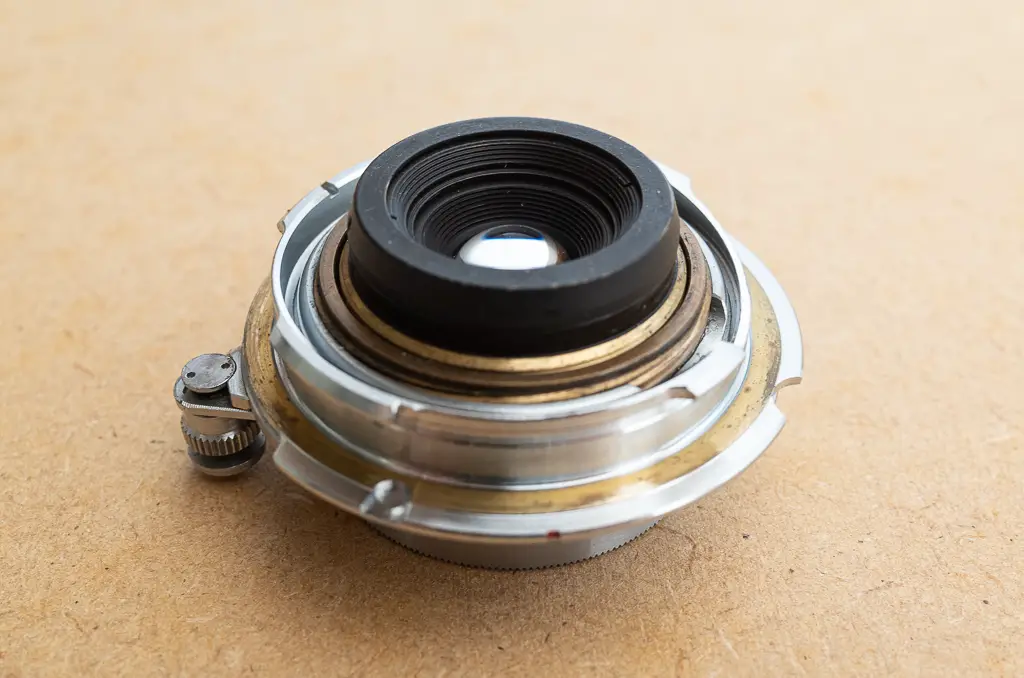
Filters and hood
There’s unfortunately some incorrect information floating around online regarding your alternative options for filters. Sure, A36 filters as well as the SOOGZ adapter will physically fit, the mouth of the lens is the right size for it (although that would make adjusting the aperture a bit tricky). But in my first-hand experience they will black out the corners of the image. I even tried getting a slimmer 34.5mm to 39mm screw-in adapter ring from China and that too caused darkened corners. What you can do is take out the glass from a 39mm filter (which is almost exactly the same diameter as the front of the lens) and somehow tape it to the front.
Other than that, your most practical and pretty much only option is to find a 34.5mm filter from either Nikon, B+W, Nicca, Ceneiplan, and perhaps some other manufacturers (Nikon being the safest choice because it will definitely have the correct 0.5 thread pitch). If you get your hands on a genuine Nikon, guard it with your life. They are very hard to find, although not impossible. A few weeks ago a listing popped up on Ebay that featured a yellow, orange, red, and two different ND filters. The bidding was going to end at 5am since the seller was in California. I left what I thought was going to be a sufficiently high bid and went to sleep. If I only knew I would have stayed up. Another bidder outbid me on their 5th attempt in the last minutes of the auction. I may have a yellow filter but I still can’t get over losing that red one.
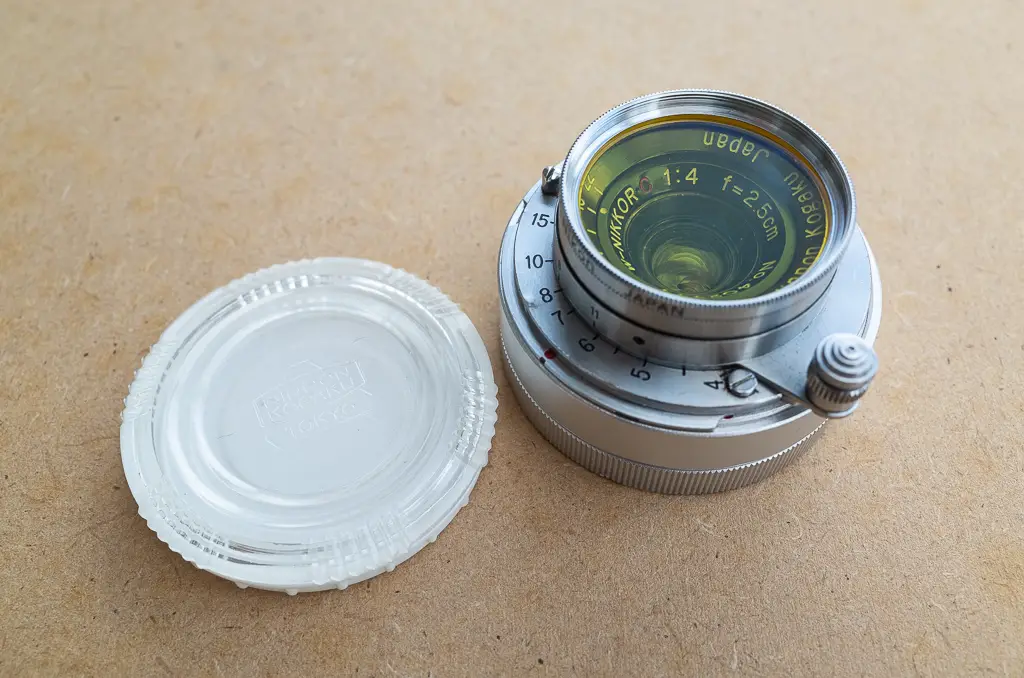
As for the hood, forget it. It is extremely rare, so rare in fact that the author of the story number 29 in Nikon’s lens history section, The Thousand and One Nights, once thought he was going to get in some hot water with his boss for accidentally throwing out a scratched-up black ring that later turned out to be the hood for the S-mount version of this lens. It is a peculiar bayonet-mount hood so perhaps the screw-in LTM version might be easier to find.
Image quality
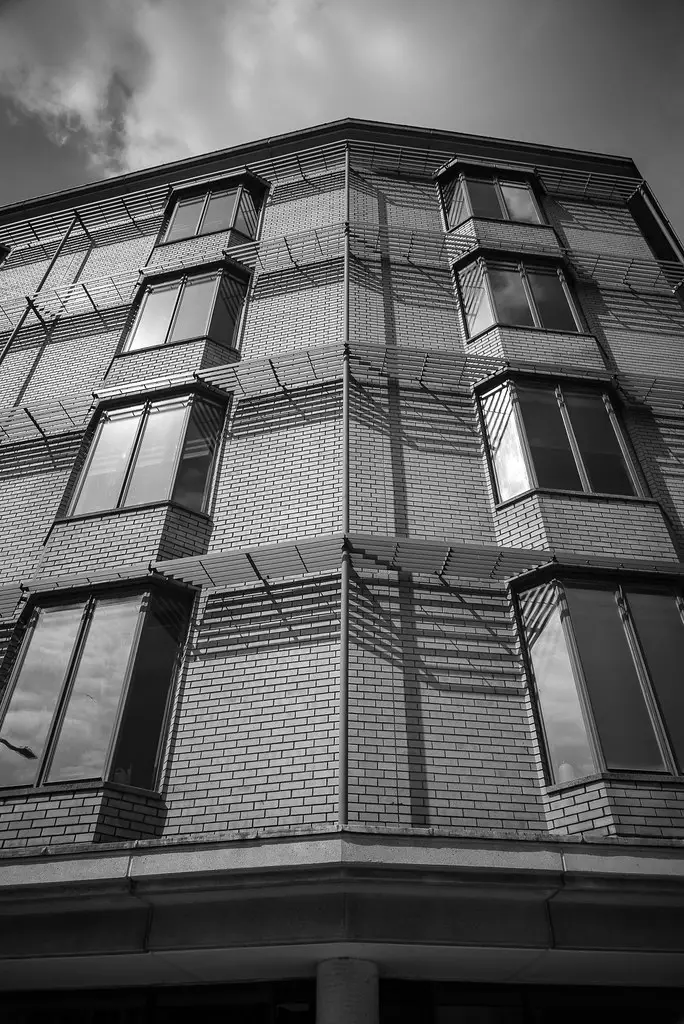
The sharpness stopped-down, where you’d most likely shoot with wide lenses, seems to be about a stop behind the 3.5cm and 2.8mm lenses. The first time I took it out for a spin, I shot mostly at f/8. But dust spot removal was annoying me so much I decided to switch back to f/5.6. The W-Nikkor.C 2.5cm f/4 might not be as crisp as the other two lenses but it is sharp enough. Wide open it’s very soft, as opposed to the 3.5cm and 2.8cm lenses which are sharp enough.
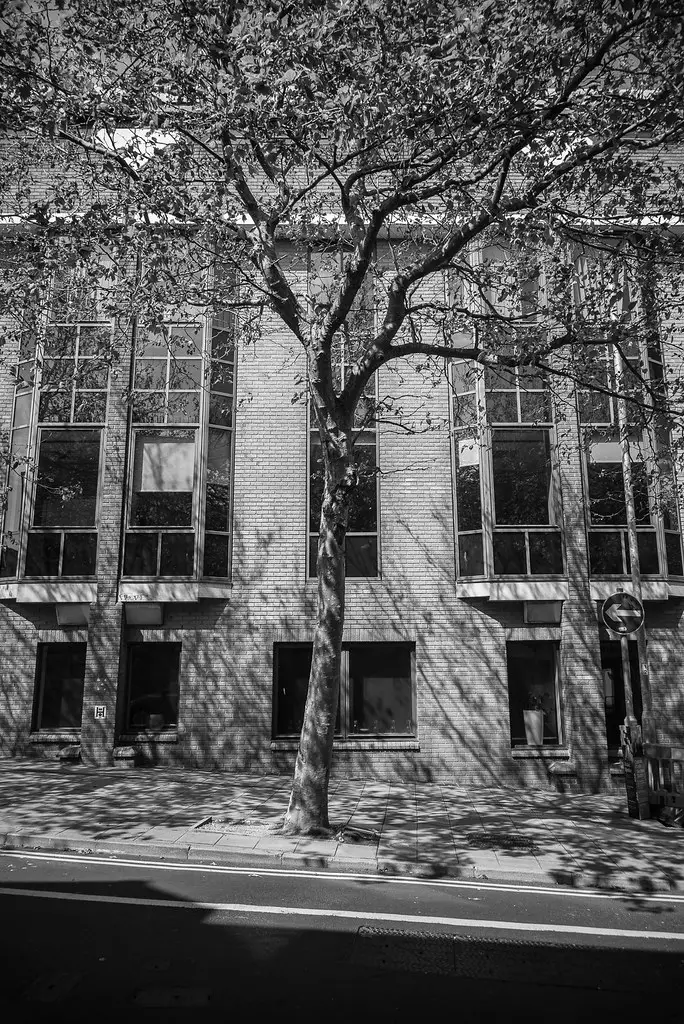
As mentioned earlier, distortion is corrected very well. This aspect is an undeniable advantage that non-retrofocus lenses have over retrofocus ones for SLRs. On top of that, this is a perfectly symmetrical 4-element design. This lens will make you feel annoyed at how crooked buildings can be.
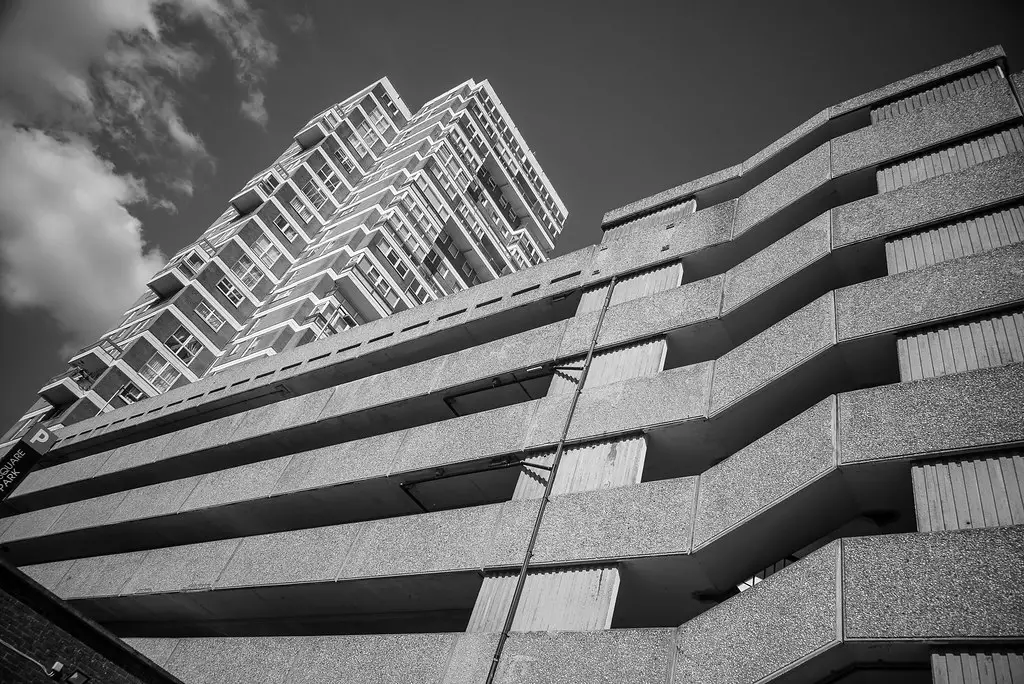
The vignette from the W-Nikkor.C 2.5cm f/4 is noticeable, some may like it and some not. I personally do, I feel it compliments the overall slightly gloomy feel that is achieved by using a yellow filter.
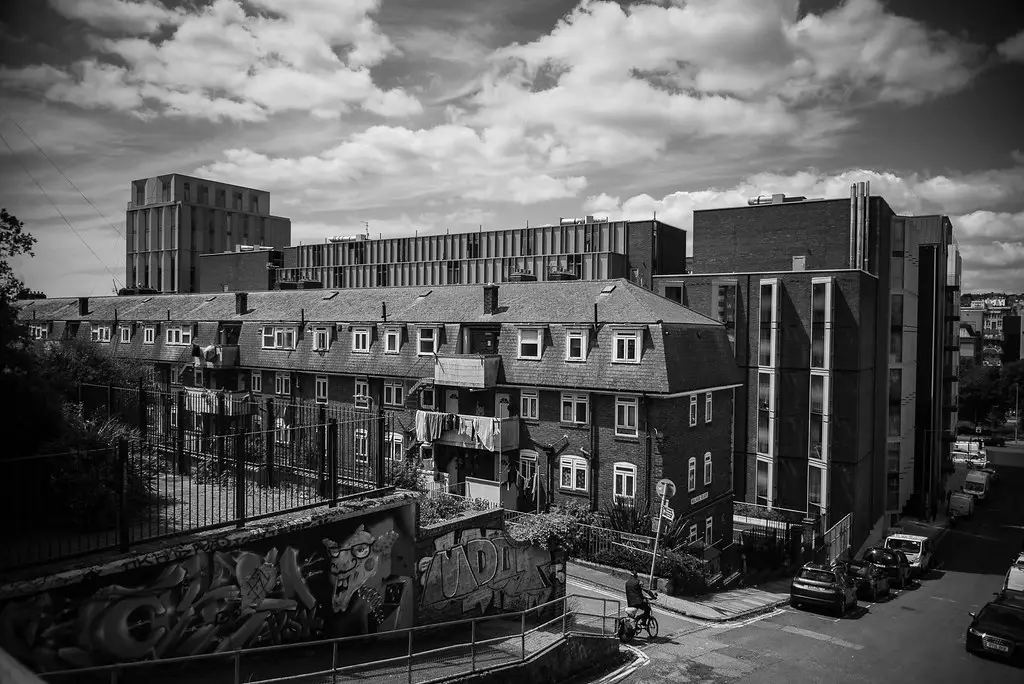
The wider the lens is, the less attention we generally pay to bokeh. It’s definitely not a strong suit of this lens or any other in this series. Does it really matter?
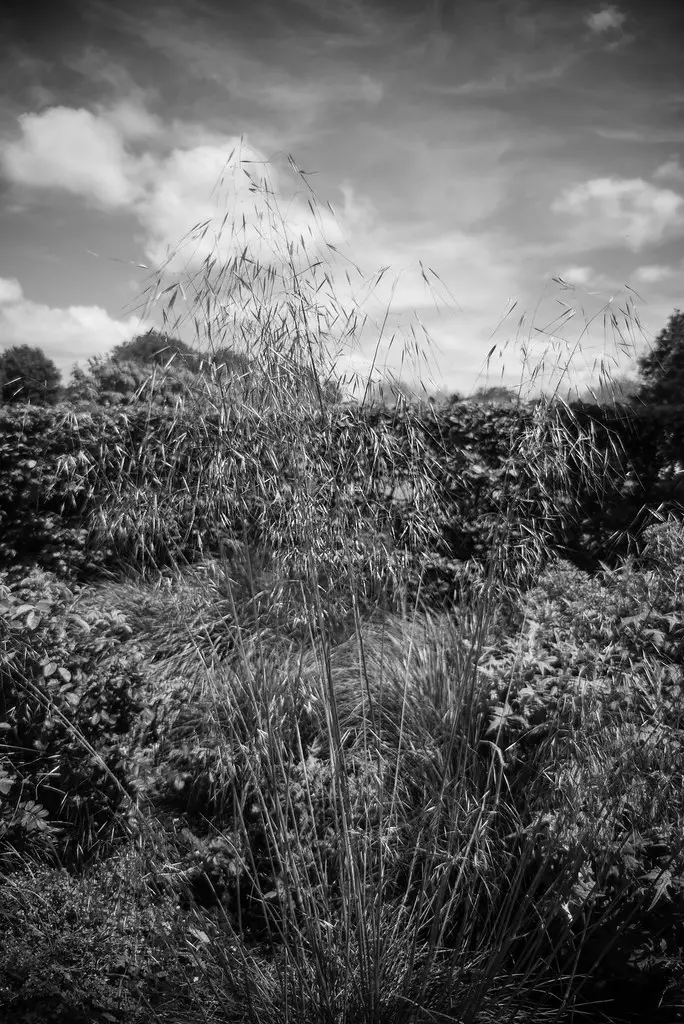
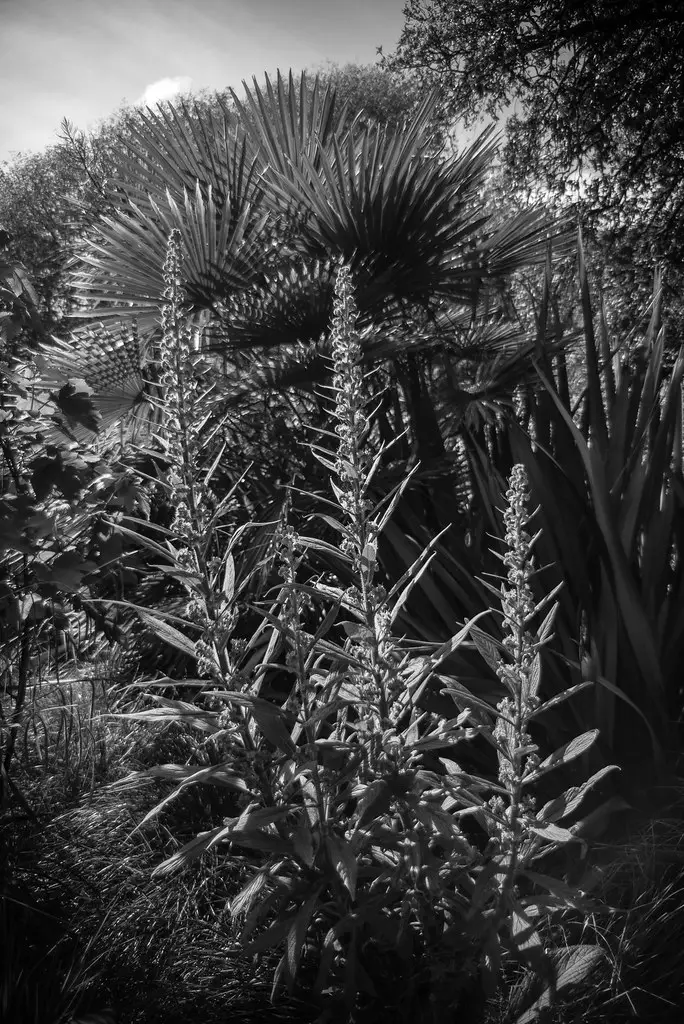
Admittedly, I didn’t shoot the W-Nikkor.C 2.5cm f/4 against the sun. However, considering it’s coated and the front element is inset quite deep, having the front of the lens act as a hood, it should be alright at handling flare.
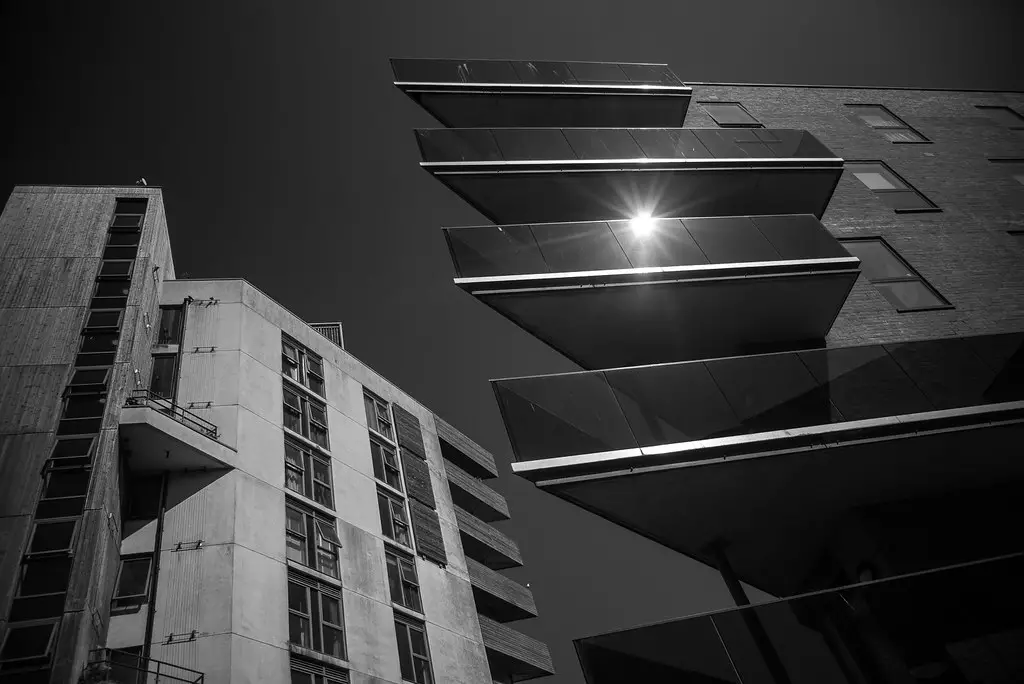
For its age, the tiny size, and insane tolerances that needed to be met with very rudimentary techniques compared to nowadays, this lens performs very well and isn’t overly fiddly to use. It’s not just a collectors’ piece and can produce some lovely images.
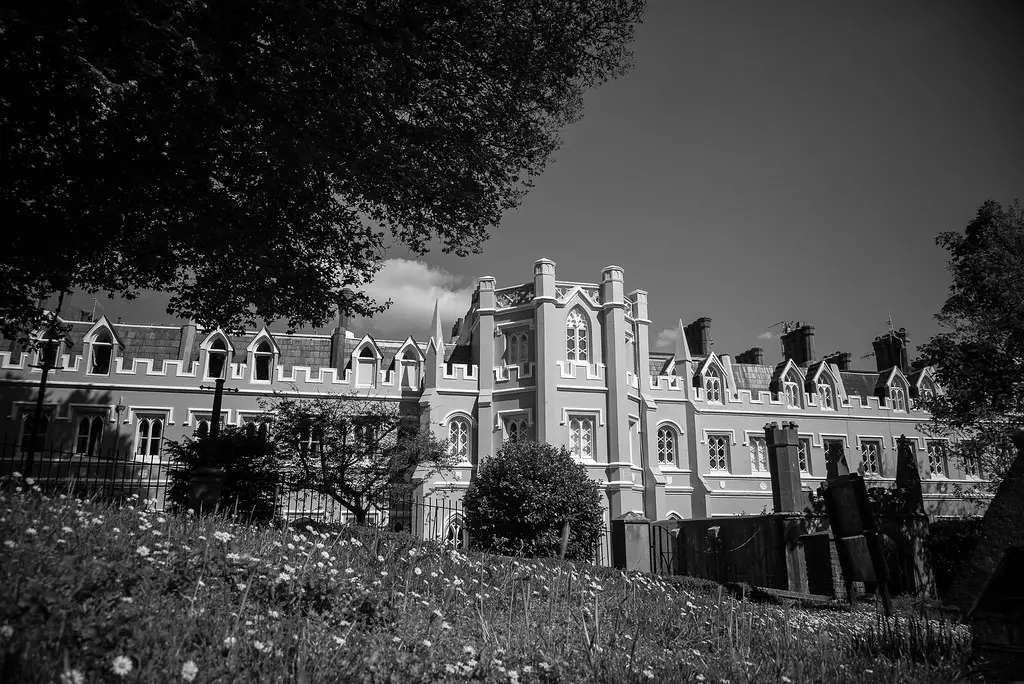
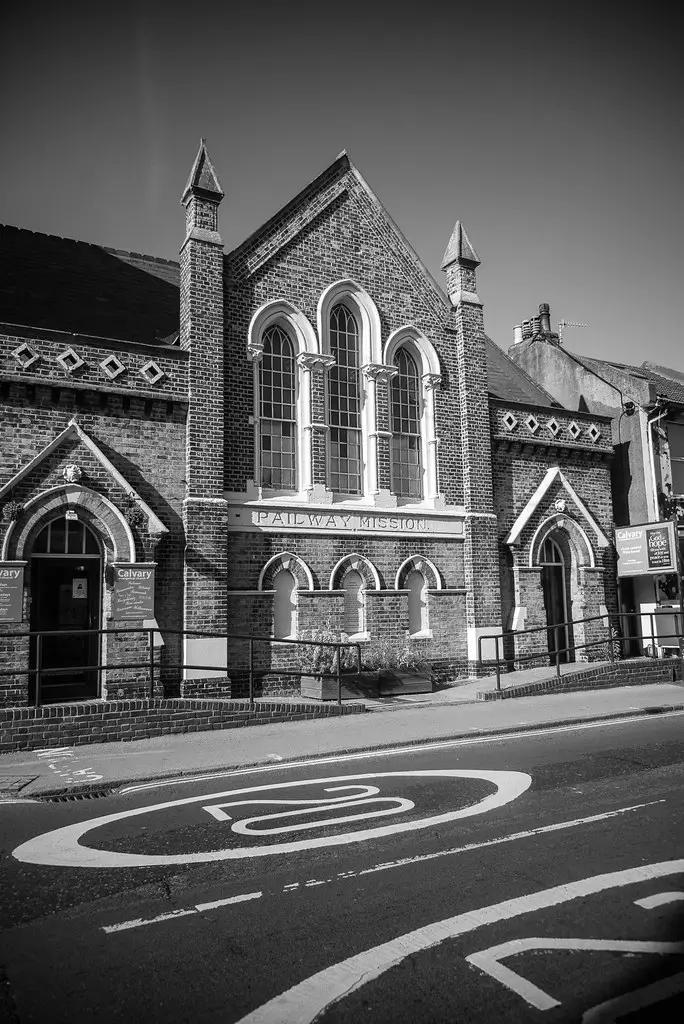
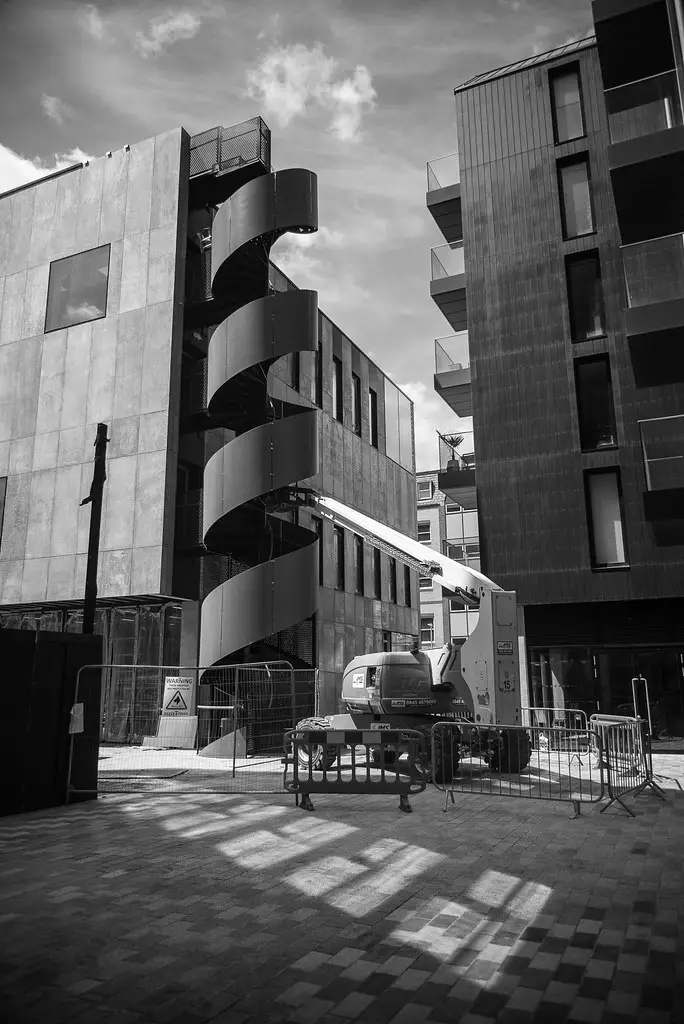
Final thoughts
Nikon has never made another 25mm lens, difficult to say why. The W-Nikkor.C 2.5cm f/4 LTM itself is not easy to find and is probably considered more of a collector’s item which is never good news for those who are looking for lenses to do photography with. If you’re itching to try a Topogon lens on your Leica, Canon actually made a slightly faster 25mm f/3.5 in LTM which is supposed to be a pretty good lens and seems easier to get. Nevertheless, it’s a lovely lens to use and not very finicky for the size.
3.5cm f/2.5, 2.8cm f/3.5, 2.5cm f/4 – and the winner is…
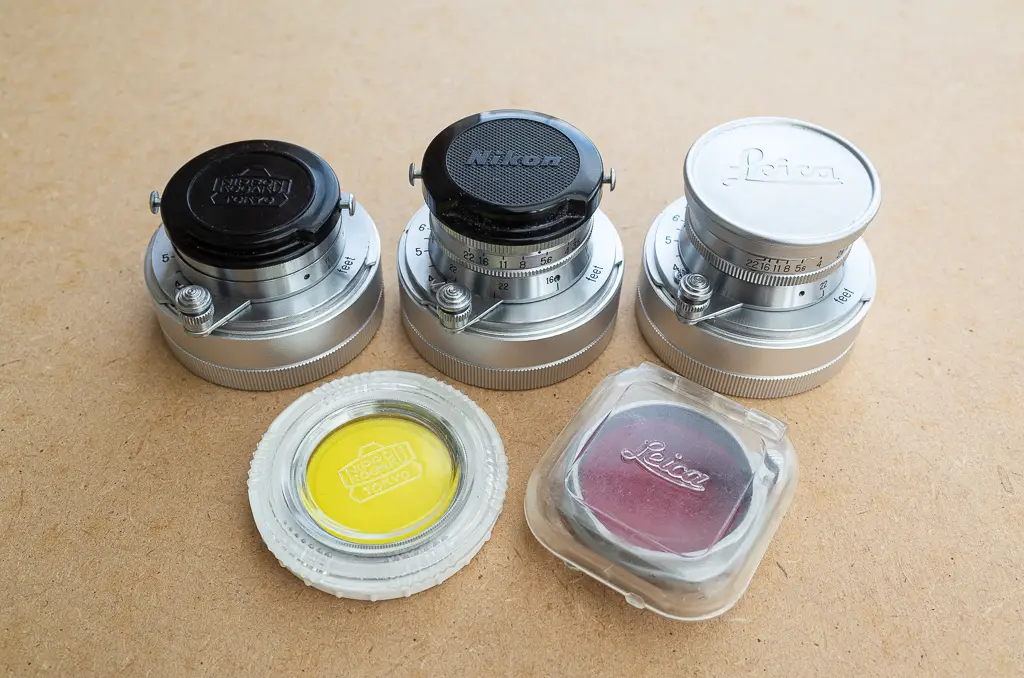
The W-Nikkor.C 3.5cm f/2.5, W-Nikkor.C 2.8cm f/3.5 and W-Nikkor.C 2.5cm f/4 lenses feel very much like a set, they are from the same era and they have more in common than not. They are not the only W-Nikkors released for rangefinders, there are two more 3.5cm lenses – f/3.5 and f/1.8. The f/3.5 version is supposed to be optically inferior to the f/2.5 and was the budget option. The f/1.8 one on the other hand has the reputation for being one of the best rangefinder lenses with this focal length. It’s not as tiny but you can’t have tiny, sharp, great in the corners, and fast. It’s very difficult to find in S-mount (it is incompatible with the Amedeo adapter due to a large rear element), even more so in LTM. There’s also the elusive 2.1cm f/4 for S-mount, extremely rare, I’m guessing impossible to adapt to Leica, never released in LTM. Probably easier to find it in its invasive F-mount version.
If I had no other choice but to keep only one, assuming I don’t manage to get my hands on the 3.5cm f/1.8 in LTM, it would definitely be the 2.8cm, but I’d sorely miss the other two. The contrast and amount of detail it delivers are awesome for a lens this small and old. The 28mm focal length is the most useful and practical. With this calibre of build quality it will outlive me. There are those who view their gear as purely an instrument, and those who consider it instrumental. The photographers who shoot with vintage lenses often fit in the latter group. Any one of these three lenses is an excellent choice for anyone looking for a small, inconspicuous lens that is fun and easy to shoot with. Doesn’t hurt they are also simply beautifully crafted objects.
Share this post:
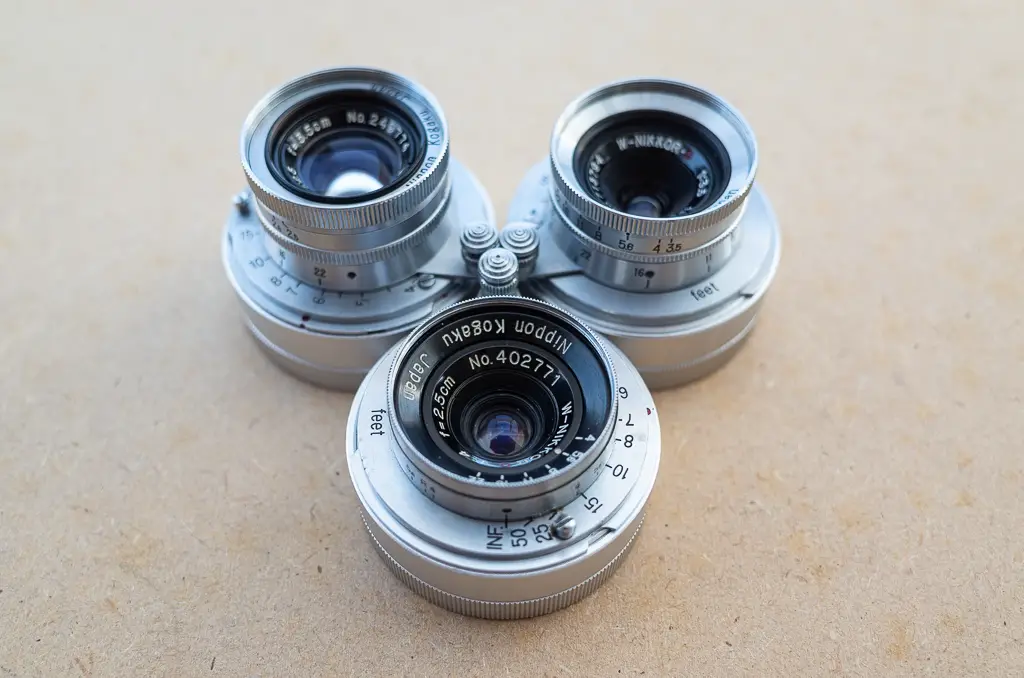








Comments
Mark Azavedo on Nikon (Nippon Kogaku) W-Nikkor.C 2.5cm f/4 LTM – Nikon’s Tiny Gems, pt 3 – By Agata Urbaniak
Comment posted: 11/10/2021
Mike Watkins on Nikon (Nippon Kogaku) W-Nikkor.C 2.5cm f/4 LTM – Nikon’s Tiny Gems, pt 3 – By Agata Urbaniak
Comment posted: 11/10/2021
Miles on Nikon (Nippon Kogaku) W-Nikkor.C 2.5cm f/4 LTM – Nikon’s Tiny Gems, pt 3 – By Agata Urbaniak
Comment posted: 13/10/2021
I'm sorry to say that I was the person who purchased that filter set on eBay... I've also added the original Nikon green one as well.
Comment posted: 13/10/2021
Gil Aegerter on Nikon (Nippon Kogaku) W-Nikkor.C 2.5cm f/4 LTM – Nikon’s Tiny Gems, pt 3 – By Agata Urbaniak
Comment posted: 21/10/2021
Paul on Nikon (Nippon Kogaku) W-Nikkor.C 2.5cm f/4 LTM – Nikon’s Tiny Gems, pt 3 – By Agata Urbaniak
Comment posted: 29/10/2021